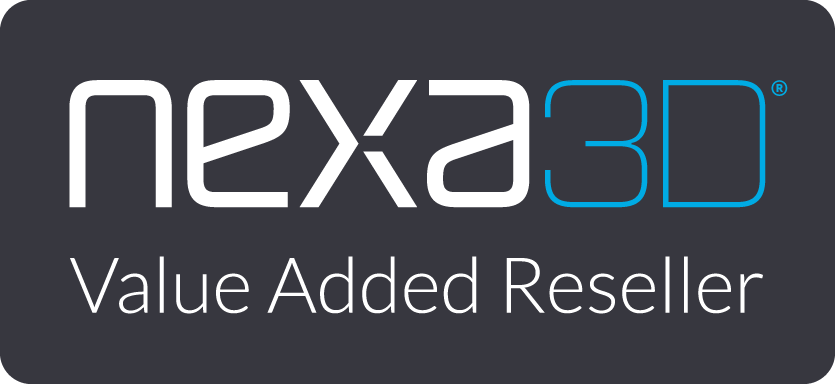Revolutionizing flight simulation with the XiP desktop 3D printer
In collaboration with the technology experts at MotoCilino, the team has brought a handheld flight controller to market in record time

In an industry where speed, accuracy and cost efficiency are critical, Yawman Flight has teamed up with engineering firm MotoCilino and Nexa3D to design and develop a unique handheld controller for flight simulation: The Yawman Arrow is the fusion of a traditional handheld gaming controller with the unique flight controls of aircraft of all sizes. Designed for precision and versatility, the Arrow combines a traditional joystick, desktop throttle and rudder pedals – and more – in a handheld form factor.
The result is a breakthrough in both product innovation and production efficiency, with the XiP desktop 3D printer playing a crucial role in achieving success.

The challenge
Fast and cost-efficient creation of true-to-the-original prototypes without investing in tools at an early stage in the development process
Yawman Flight was faced with the challenge of developing a unique flight simulator controller under significant time and budget constraints. The main objectives were to develop a unique portable flight simulator controller and to complete the project quickly and cost-effectively without investing in expensive injection molding tools. In addition, the team required a high-quality surface finish and mechanical performance of all components, so fast and cost-effective production in injection-molded quality was crucial to the success of the project.
Yawman Flight’s target audience is flight simulation enthusiasts and professionals in the aviation industry who demand high-quality, realistic flight simulation experiences. The flight simulation industry requires high quality products that meet stringent specifications for part tolerances and mechanical performance to provide a truly realistic simulation experience.
“With the XiP, we were able to produce an end product that is comparable to injection molding in terms of surface finish and performance, but without the cost and long lead times. If we had used a different manufacturing process in the prototyping phase, our production would have been delayed by up to a year.”
Thomas Nield, Technical Director at Yawman Flight

Customer
Yawman Flight and MotoCilino
Industry
Aviation
Products
- XiP desktop 3D printer
- xABS3843 Resin
Application
High-fidelity prototyping
Advantages
- Fast production of true-to-original prototypes
- Savings of tens of thousands of dollars in tooling costs
- Surface quality and mechanical performance similar to injection molding
- Reliable, fast desktop 3D printing with high-performance plastic


Solution
The XiP proved to be the ideal tool for this task due to its accuracy and printing speed
Yawman Flight worked with engineering firm MotoCilino Engineering Service to develop a unique control unit in record time. This involved going through 17 different design iterations before the final assembly was validated in just a few weeks. The final prototype of the control unit consists of 36 different components, all of which were printed on the XiP desktop 3D printer using the high-performance resin xABS3843.
The team at MotoCilino decided to print the components with the XiP due to the printer’s reliability and high print quality using high-performance plastic that mimics the mechanical properties of production-quality ABS. The finished control unit is virtually indistinguishable in its visual aesthetics and mechanical performance from the components that were manufactured using an injection molding process. “Printing with the XiP allowed us to deliver the components to the Yawman team in half the time it would have taken us if we had used another desktop SLA printer, and the print quality of the XiP is simply outstanding,” said Paul Cilino, owner of Motocilino.
Benefit
Reduce time to market by almost a year and provide faithful prototypes at a fraction of the cost
The team was able to finalize the design and deliver a high-quality prototype with injection-mold-like surface finish and mechanical performance quickly and cost-effectively. The finished assembly comprised more than 36 printed components, which are virtually indistinguishable from their injection-molded counterparts in terms of surface finish and mechanical performance. As a result, the team is now ready to scale production and prepare for commercial launch in July 2023, following the initial demand during the beta phase earlier this year.



